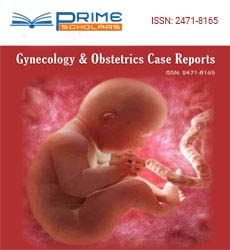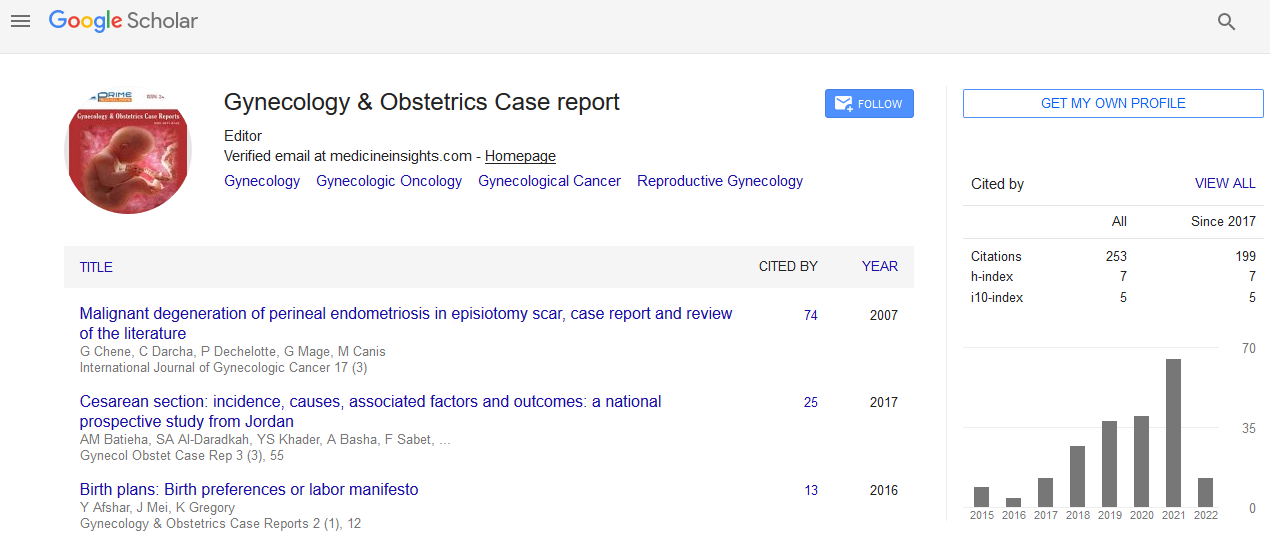Brief Report - (2025) Volume 11, Issue 1
Management of Recurrent Ovarian Cancer: Emerging Strategies and Clinical Trials
Kiara Albania**
Department of Cancer, Shaqra University, Abha 628478, Saudi Arabia
*Correspondence:
Kiara Albania*, Department of Cancer, Shaqra University, Abha 628478,
Saudi Arabia,
Email:
Received: 27-Dec-2024, Manuscript No. ipgocr-25-22702;
Editor assigned: 30-Dec-2024, Pre QC No. ipgocr-25-22702(PQ);
Reviewed: 10-Jan-2025, QC No. ipgocr-25-22702(Q);
Revised: 17-Jan-2025, Manuscript No. ipgocr-25-22702(R);
Published:
24-Jan-2025
INTRODUCTION
Recurrent ovarian cancer remains one of the most challenging conditions in oncology, with the potential to affect a large proportion of women diagnosed with this disease. Despite advances in initial treatment options such as surgery and chemotherapy, ovarian cancer often recurs, leading to the need for more effective management strategies. The recurrence of ovarian cancer is a significant clinical challenge, as it is associated with poor prognosis and limited treatment options. However, recent research into emerging therapies, clinical trials and personalized medicine strategies offers hope for improving outcomes for these patients [1]. Ovarian cancer, particularly in its advanced stages, is frequently diagnosed at a point where it is difficult to completely eradicate the disease. After initial treatment, this typically involves a combination of surgery and platinum-based chemotherapy; many patients experience a period of remission.
However, the risk of recurrence remains high, with a substantial proportion of women seeing the return of the disease within a few years. Once ovarian cancer recurs, it becomes more difficult to treat, as the tumor may become resistant to the treatments used previously, complicating the management strategy [2]. The management of recurrent ovarian cancer involves several approaches, with the aim to extend survival, improve quality of life and minimize treatment toxicity. A cornerstone of therapy for recurrent ovarian cancer has been the use of platinumbased chemotherapy, which includes agents such as carboplatin and cisplatin. While these agents have shown efficacy in many patients, the development of resistance is a common issue. This resistance significantly limits the effectiveness of further chemotherapy cycles and often leads to the need for alternative therapeutic approaches.
DESCRIPTION
Emerging strategies for the management of recurrent ovarian cancer include the incorporation of targeted therapies and immunotherapies, which are designed to be more selective in targeting cancer cells and sparing normal tissues.Targeted therapies, such as those targeting the vascular endothelial growth factor (VEGF), aim to inhibit the blood supply to the tumor, thereby limiting its growth. Other targeted approaches focus on specific genetic mutations or alterations that are often seen in ovarian cancer, such as BRCA1 and BRCA2 mutations, which can make tumors more sensitive to certain therapies, including PARP inhibitors. These inhibitors, like olaparib and niraparib, are showing promise in treating recurrent ovarian cancer, particularly in patients with BRCA mutations [3]. Immunotherapy has also emerged as an important area of investigation in the treatment of recurrent ovarian cancer. Unlike traditional therapies, immunotherapies seek to harness the bodyâ??s immune system to fight cancer. Immune checkpoint inhibitors, which block proteins like PD-1 or PD-L1, have demonstrated efficacy in other cancers and are now being explored in ovarian cancer. These therapies work by removing the brakes on the immune system, allowing it to recognize and attack cancer cells more effectively. However, ovarian cancerâ??s complex immune microenvironment has posed challenges to the widespread success of immunotherapy, necessitating further research to identify the best candidates for these treatments [4].In addition to targeted therapies and immunotherapies, combination treatments are increasingly being studied. Combining chemotherapy with targeted therapies, immunotherapies, or novel agents may help overcome resistance and improve outcomes.
The results from clinical trials indicate that certain combinations can increase the effectiveness of existing treatments, while also potentially minimizing side effects. For example, the combination of immune checkpoint inhibitors with chemotherapy or PARP inhibitors is being investigated in ongoing trials to determine if it offers superior benefits compared to single-agent therapies. Personalized medicine is another promising approach in managing recurrent ovarian cancer. Advances in genomic profiling and tumor sequencing allow for the identification of specific mutations and molecular characteristics of a patient's tumor, which can then guide treatment decisions. For example, identifying whether a tumor harbors mutations in DNA repair genes like BRCA1/2 can help clinicians decide if a patient is a good candidate for PARP inhibitors. Additionally, liquid biopsy technologies, which analyze circulating tumor DNA from blood samples, are being developed to provide more frequent and non-invasive monitoring of tumor evolution and treatment response [5].As part of the effort to improve outcomes in recurrent ovarian cancer, ongoing clinical trials are critical to the development of new therapies. These trials are investigating a wide array of novel agents, including gene therapies, small molecules and immune- based therapies. The results from these studies will provide valuable insights into how best to combine and sequence treatments for optimal patient benefit. Moreover, clinical trials also offer patients access to cutting-edge treatments that may not yet be available through standard care, providing hope for those with limited treatment options.
CONCLUSION
Despitethe challenges posed by recurrent ovarian cancer,
advances in research and clinical trials are beginning to yield
new treatment strategies that offer improved outcomes for
patients. The shift towards targeted therapies,
immunotherapies and personalized medicine holds the
potential to revolutionize the management of this disease,
improving survival rates and quality of life for women affected
by ovarian cancer. Continued investment in research, patient
access to clinical trials and collaboration between clinicians
and researchers will be essential in transforming the
landscape of recurrent ovarian cancer treatment.
Acknowledgment
None.
Conflict of Interest
None.
Conflict of Interest
None.
REFERENCES
- Isaacs Jr HI (2002) Perinatal brain tumors: A review of 250 cases. Pediatr Neurol 27(4):249-261.
Google Scholar Cross Ref Indexed at
- Louis DN, Perry A, Wesseling P, Brat DJ, Cree IA, et al. (2021) The 2021 WHO classification of tumors of the central nervous system: a summary. Neuro Oncol 23(8):1231-1251.
Google Scholar Cross Ref Indexed at
- Gierach GL, Pfeiffer RM, Patel DA, Black A, Schairer C, et al. (2014) Long-term overall and disease-specific mortality associated with benign gynecologic surgery performed at different ages. Menopause 21(6):592.
Google Scholar Cross Ref Indexed at
- Falconer H, Yin L, Grönberg H, Altman D (2015) Ovarian cancer risk after salpingectomy: A nationwide population-based study. J Natl Cancer Inst 107(2):410.
Google Scholar Cross Ref Indexed at
- Kauff ND, Barakat RR (2004) Surgical risk-reduction in carriers of BRCA mutations: Where do we go from here? Gynecol Oncol 93(2):277-279.
Google Scholar Cross Ref Indexed at
Citation: Citation: Albania K. (2025) Management of Recurrent Ovarian Cancer: Emerging Strategies and Clinical Trials. Gynecol Obstet Case Rep. Vol.11 No.1:10.
Copyright: Copyright: © Albania K. This is an open-access article distributed under the terms of the Creative Commons Attribution License, which permits unrestricted use, distribution and reproduction in any medium, provided the original author and source are credited.

